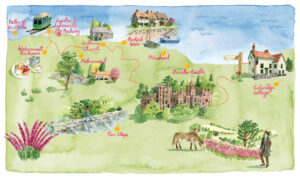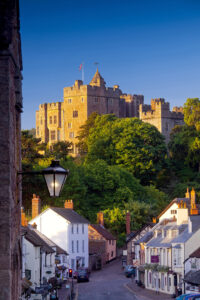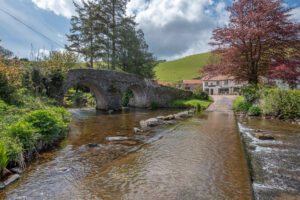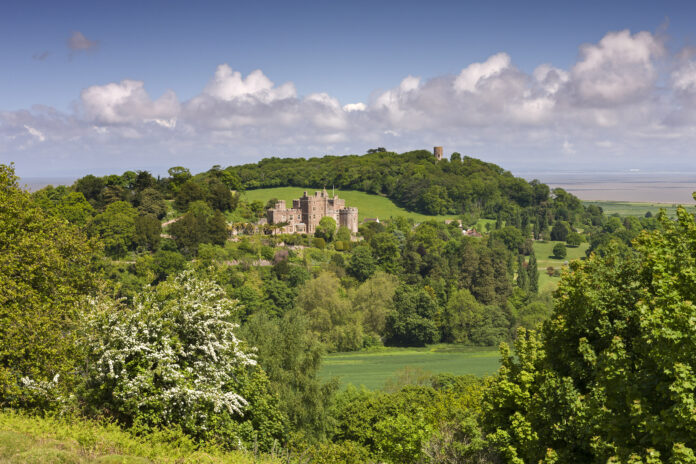Born 250 years ago, the poet Samuel Taylor Coleridge was one of many writers to be awed and inspired by the wild beauty of Exmoor, and fellow romantics will be too
WORDS Natasha Foges
The national park of Exmoor, which carpets 267 square miles of Devon and Somerset, is a microcosm of England’s most iconic landscapes: heather-clad moors; undulating green hills dotted with sheep; tumbling rivers in deep wooded valleys; and dramatic cliffs plunging to the shoreline. It’s thrilling to travel between these varied terrains via the winding lanes that criss-cross Exmoor, which reveal stunning views at every turn.

And it’s not all about the landscape: enfolded within the hills are historic towns and villages with houses hewn out of the local stone, and centuries of traditions and stories to discover.Many visitors’ first stop is the medieval village of Dunster, pretty as a picture with its cobbled streets, thatched cottages and fairytale castle perched high on the hill above. This Saxon castle was the home of the aristocratic Luttrell family from 1376, who transformed it into a lavish country home in the Victorian era.
Dotted with family mementos, the castle has a warm, lived-in feel that gives you the lingering sense that the Luttrells have only just left the room. Among many treasures, the jewel of the collection is a set of rare 17th-century leather wall hangings telling the love story of Antony and Cleopatra. Exmoor’s wild beauty has drawn many romantic souls here over the years, most famously the poet Samuel Taylor Coleridge (1772-1834), who was born 250 years ago this year.
Coleridge was fond of walking from his cottage in Nether Stowey across the moors to the sea, often accompanied by his friend and fellow poet, William Wordsworth. The Romantic poetry movement, rooted in reverence for the natural world and the notion that nature can set the imagination free, was born on these long countryside strolls.

The Coleridge Way allows modern-day romantics to follow in the poet’s footsteps. Signposts marked with a quill lead the way to the bustling village of Porlock and, further down, Porlock Weir, an ancient port that’s now a quaint hamlet, sheltered beneath towering cliffs. You can walk from here along the coast path to the hamlet of Culbone, where England’s smallest church has a ‘leper window’, created for a 16th-century leper colony to peer in during services.
In 1797, after walking to Culbone, Coleridge stayed in a nearby farmhouse where he fell into an opium-induced trance that inspired his strange, hallucinatory poem Kubla Khan. The arrival of a visitor from Porlock shattered his reverie and caused him to leave the poem unfinished, hence the phrase ‘a person from Porlock’ to mean the unwelcome interruption of one’s creative flow.
On the path to Culbone, two tunnels are all that remains of Ashley Combe House, the summer retreat of Ada Lovelace, daughter of another Romantic poet, Lord Byron. Obsessed with mathematics rather than poetry – her father called her his ‘Princess of Parallelograms’ – she is now considered the world’s first computer programmer.
The grand house, demolished in the 1970s, had an Italian-style terraced garden with tunnels built into the cliff so that tradesmen could approach the house without spoiling the view.Another writer inspired by Exmoor’s wildly romantic landscapes was RD Blackmore (1825-1900). One of the most famous novelists of his generation, Blackmore set Lorna Doone in the mystical Badgeworthy Valley. His tale of nobles turned outlaws was based on stories of the Dounes, a family of brigands that once roamed these hills.

Visitors to Lorna Doone Country, as it’s now known, can peek into 15th-century Oare Church, scene of the novel’s climactic wedding-day shooting, and seek out the Lorna Doone Farm in the picture-postcard village of Malmsmead, with its ancient bridge and ford.






 © 2024
© 2024